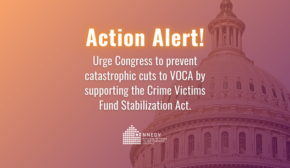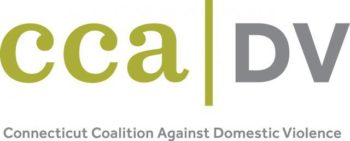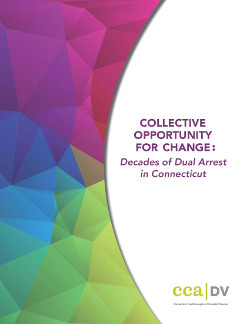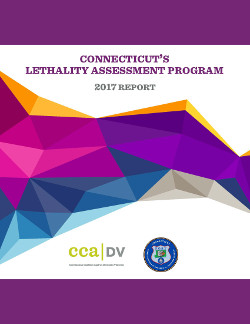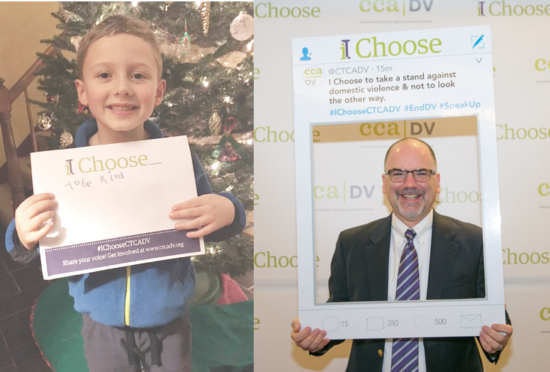Meet the Connecticut Coalition Against Domestic Violence
Through this regular feature, the National Network to End Domestic Violence (NNEDV) will be introducing you to our member coalitions. Read the rest of our Meet A Coalition features here.
Meet the Connecticut Coalition Against Domestic Violence (CCADV):
What is it like to do domestic violence work in Connecticut?
The work we do at the Connecticut Coalition Against Domestic Violence (CCADV), along with our 18 member organizations, to improve outcomes for victims and survivors of domestic violence in Connecticut is incredibly rewarding. Though we are a small state, our member organizations serve nearly 40,000 victims annually. Our coalition strives to the best of our ability to ensure that the complex needs of victims and survivors can be met so that they may be safe and safer despite limited resources.
What impact does your unique Connecticut context have on this work?
The small size of Connecticut can both benefit and challenge our work. Our membership is able to work together closely to solve problems and serve survivors. We also have a strong network of state agencies and community-based partners that work together collaboratively to provide a strong, cross-systems response. However, one challenge presented in our small state is a lack of public transportation options and an over-reliance on cars, to which some victims and survivors simply do not have access. Moving victims or getting them to necessary appointments even within a small state can be challenging when public transportation is lacking.
What are the biggest barriers that survivors face in Connecticut?
Similar to experiences in many other states, access to affordable housing remains one of the most challenging barriers for survivors in Connecticut. Nationally, domestic violence is the leading cause of homelessness for women and children. Each year, approximately 1,200 adults and 1,000 children (the majority of whom are six years old or younger) stay in one of Connecticut’s domestic violence shelters. Last year, just over 100 women and children were residing in a domestic violence transitional living program in our state. Housing instability can have both short- and long-term consequences for survivors and their children. It is essential that we work across systems to identify, develop, and secure safe and affordable housing options so that survivors and their children can heal.
What’s happening in Connecticut that you’re excited about? Proud of?
We’re incredibly proud and excited about so much of the work being done here in Connecticut to strengthen outcomes for survivors! Here are just a few examples:
New Dominant Aggressor Law: Earlier this month Governor Malloy signed into law new legislation that adds a dominant aggressor provision to Connecticut’s family violence arrest law. Connecticut has struggled with a high dual arrest rate for more than 30 years, which currently stands at more than twice the national average. We are proud to have received overwhelming bipartisan support for this measure which will help make victims safer by preventing them, in many situations, from also being arrested. CCADV proposed the change following a seven month project to better understand our state’s dual arrest challenge. Learn more in our report.
Housing Resources Memorandum of Understanding (MOU): CCADV, along with our partners at Connecticut Coalition to End Homelessness (CCEH), has led nationally on creating an MOU between our two systems that facilitates access to housing resources for domestic violence survivors. The federally-mandated Housing Management Information System (HMIS) has historically presented obstacles for the input of identifying information related to domestic violence survivors whose confidentiality is also federally-mandated. Together with state and federal funders, CCADV and CCEH developed a protocol that allows domestic violence survivors to be added anonymously to the housing registries maintained in HMIS.
From the launch of this system in January of 2017, domestic violence providers have referred 134 households to the homeless system for housing resources, including 60 single adults and 74 families. To date, 62 households, including 24 single adults and 38 families, have been housed or matched to a housing resource (and are in the process of securing housing).
Lethality Assessment Program (LAP): We are proud to be the first state, as of November 2017, to have all of our municipal, state, and campus-based police departments utilizing LAP, a nationally-recognized, evidence-based assessment tool. LAP assists law enforcement in identifying victims of intimate partner violence who are at high risk for fatal violence and quickly gets them connected to a certified domestic violence counselor while police are still on the scene. During the first five years of LAP in Connecticut, more than 22,500 LAP screens were conducted, of which 51 percent were deemed to be “high danger.” Of those “high danger” screens, 73 percent of victims immediately connected with a counselor and 89 percent of those victims later followed up for services. Learn more in our recent report.
Are there any champions in Connecticut that you’d like to thank or celebrate for their record or work on domestic violence?
We have so many champions in our state and federal legislative delegations, as well as our state executive and judicial branches of government, that it would be difficult to name them all. We thank our champions for their ongoing support and leadership to improve outcomes for survivors through strong policy and practice.
We also want to thank our generous event sponsors that help fund those activities, such as prevention and public awareness, not traditionally supported by grant dollars. This includes Verizon, Dominion Energy, Comcast, Mohegan Sun, Spectrum, Bank of America, and AT&T, among others.
Finally, we can’t do what we do without our many community partners. First and foremost are our 18 member organizations that work each day in every city and town in Connecticut to provide quality services that meet the complex needs of survivors. Thank you for your dedicated and tireless efforts! We also want to recognize and thank the growing membership of CCADV’s First 100 – a group of individuals annually recognized for their commitment to addressing domestic violence within their local communities. Here’s a list of who we’ve honored since the inaugural class in 2011.
How is your coalition working to end domestic violence?
Prevention is key to ending domestic violence. It is only through prevention and public awareness that we will be able to create the culture shift that is needed to end this public health epidemic. While funding still heavily prioritizes intervention as opposed to prevention, our CEO, Karen Jarmoc, works diligently to raise money to support our prevention and awareness activities. We are proud of our new prevention campaign, “I Choose,” which is aimed at engaging boys and men to make positive life choices that don’t involve violence. Our members are helping to spread the campaign across the state. Check out our campaign video and social media toolkit.
If your coalition was a musician or music group, who would you be and why?
Music has the power to heal. There are so many talented artists from whom survivors and advocates can draw strength and inspiration. That said, merely as the result of a running joke in our office, we’d be Hootie & the Blowfish. Long live Darius Rucker.
Learn More about CCADV:
- Website: CTCADV.org
- Facebook: CTCoalitionAgainstDomesticViolence
- Twitter: @CTCADV
- Instagram: @ctcadv
- YouTube: CT Coalition Against Domestic Violence





